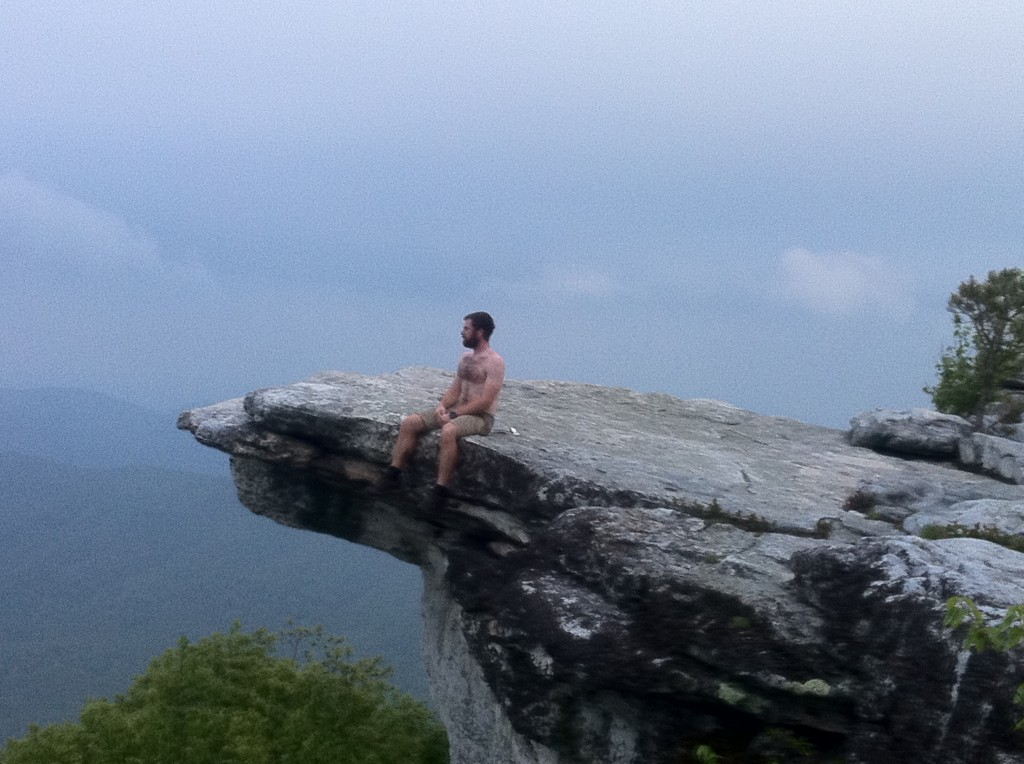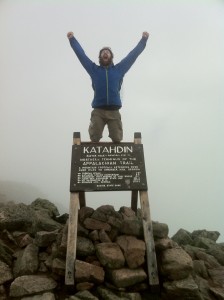The following post pulls advice from Zach’s upcoming Appalachian Trail Book: Appalachian Trials. For more information on the only AT prep book that prepares hikers for their ensuing psychological/emotional battle, join the Appalachian Trials Book newsletter.
Five millions steps. Two thousand, one hundred and eighty one miles. Six months.
This is what’s required of someone crazy enough to attempt thru-hiking the Appalachian Trail. It is no surprise that roughly four out of five people who attempt this feat ultimately end up falling short. Experienced backpackers, retired military, and endurance enthusiasts alike often fall into this majority.
Aspiring and early stage entrepreneurs can relate to the uncertainty that comes from chasing a dream known for a high failure rate. As someone who has successfully traveled down both paths (I was a self-employed Internet marketer in my former life), I believe there are lessons to be learned from thru-hiking the Appalachian Trail that can be applied to a startup’s success.
Let’s examine why I, someone who had slept in a tent twice and been backpacking exactly zero times prior to embarking on this daunting journey, am able to successfully thru-hike the Appalachian Trail.
The following provides both aspiring thru-hikers and entrepreneurs three tools for long-term success.
Hiking the AT; Launching A Startup: Why are you doing this again?
It does not take too many scampers through lightning storms, evenings assembling a tent in hail storms, or frigid mornings of putting on sweat-soaked clothes before a hiker asks themselves this very important question: why am I doing this again?
Similarly, it does not take too many unreturned phone calls, IT headaches, or financial statements revealing the bottom line falling deeper into the red before this same question presents itself: why am I doing this again? Why are you doing this again? The problem is, too often, in the throes of battle we do not have a compelling enough answer, or more accurately put, we have forgotten.
Odds are for anyone even considering embarking on a half year backpacking trip through the woods, there is a damn good reason for it. Either they’re seeking adventure, a new challenge, or were unsatisfied with the direction their life was heading. For someone getting into their own business, there has to be a compelling reason. Either they can’t stand working for someone else, they’re confident their idea will be a hit, or love the chase that is the American Dream. These same individuals would have no trouble answering this question in the weeks leading up to their decision, but when it hits the fan, these reasons suddenly become a little harder to recall.
It’s important for us to answer these challenging questions before embarking on our adventure — at the height of our conviction. Why are you hiking the AT? Why are you trading in your 9-5 for your 5-9? What are you looking to get out of your experience? What will become of you if you fail to follow through? I encourage you to really dig deep when asking these questions. Let your emotions run wild. Focus on being too thorough without fearing redundancy. Uncovering these compelling reasons before leaving for the trail can very well be the difference between throwing in the towel and persevering.
The Virginia Blues
On the trail there is a phenomenon referred to as The Virginia Blues. Of the 2,181 miles that make up the Appalachian Trail, Virginia claims 550 of these, just over one quarter of the entire trail’s length. And it is for this reason, in addition to the (mis)perception of repetitive scenery throughout the state, that hikers experience a momentary stint of depression. This so-called condition is a gross misdiagnosis.
 In the beginning of a hiker’s journey, every day is chock full of excitement, especially for those with little-to-no backpacking experience. Every summit view, wild animal encounter, and quirky lifestyle oddity (i.e. pooping in the woods) is nothing shy of exciting. Even the trying times (i.e. a light 11-mile jog through a lightning storm) are exhilarating.
In the beginning of a hiker’s journey, every day is chock full of excitement, especially for those with little-to-no backpacking experience. Every summit view, wild animal encounter, and quirky lifestyle oddity (i.e. pooping in the woods) is nothing shy of exciting. Even the trying times (i.e. a light 11-mile jog through a lightning storm) are exhilarating.
Eventually the exhilaration fades into frustration. Life in the woods has become the routine, while a warm bed, hot food, and electronic entertainment on demand become the exceptions. Lightning storms lose their novelty. Even your favorite parts of the trail lose their luster. You have already seen this view or that snake.
This bout with the blues typically takes place anywhere between weeks 4-8 for most hikers and therefore just so happens to occur within the state lines of Virginia. Remember, correlation does not imply causation. Blaming Virginia for your blues makes as much sense as blaming your middle school for puberty.
What a hiker is experiencing is the death of the honeymoon.
Sound familiar?
In an entrepreneur’s world, the initial phases are a chaotic storm of excitement. You are working sixteen hour days, sleeping in your car or under your desk, surviving on a diet of coffee and stale bagels, but damn, is it exciting. There are a number of near breakthroughs on the table that will undoubtedly lead to success. The fulfillment that comes from pursuing your dream seems to lighten your infinite workload.
As with the trail, eventually the frustration surpasses your excitement. The results just aren’t where you want them to be, and you are starting to wonder if you are in over your head. You have finally found some semblance of routine, but the ship just is not changing directions as fast as you would like. You have hit a stalemate and are too burnt out for a radical change in approach.
Entrepreneurs may start to question if the goal is worth the headache. It is a legitimate question all startups should ask themselves, but the mere presence of this new low should not be a cue to bail. What you are experiencing is the death of the honeymoon — it is normal.
What can you do to combat this loss of excitement. The best defense against the lull that comes along with the end of the honeymoon, is the expectation of it.
By realizing that this momentary low is no different than the lull we experience in our new relationships, moving to a new city, new diet, etc., we come to understand that this should not signal our time to throw in the towel. Take time to consider again why you are doing what you are doing (see point #1), and reconsider what your alternative would be. Taking orders from someone you are smarter than may be the catalyst for your second wind.
Know When to Let Off the Gas
The above two points present scenarios which every thru-hiker and entrepreneur will encounter within the first couple of months of their journey. Correspondingly, this is when the first wave of pretenders disappear. Those who can make it through these daily trials and tribulations will ultimately face a greater challenge down the road. For hikers, it may be Lyme Disease, West Nile Virus, a broken bone, debilitating shin splints, loneliness, homesickness, other illness, injury or emotional letdown. For entrepreneurs, maybe it is a lawsuit, having a competitor land a major partnership, losing a crucial employee, and so forth.
This is the point where many throw in the towel. For others, they grit their teeth and fight even harder against the obstacles in front of them. Unfortunately, this marks the beginning of their end. Pushing harder in the face of distress is a recipe for failure. When a car’s caution light goes on, the proper response is not to ignore the signal and press the gas to the floor. Without proper maintenance your vehicle (your mind) will eventually fail you.
When presented with a trying day, week, or even month, it is your responsibility to get off trail (whether literal or figurative) and decompress. While this information may seem like a no-brainer for hikers, I realize this advice goes against the grain for entrepreneurs. Keep in mind that success doesn’t happen overnight. If you don’t take care of yourself while in the grind, burnout will inevitably result. If your project goes onto greater heights, you will not be able to access the original creativity that got you off the ground in the first place. If you decide to shut down the project, you will ultimately leave your venture with a bad taste in your mouth and likely feel uninspired to pursue your next breakthrough idea.
——————
Whether it is a half year journey through the woods or trading in your savings account in pursuit of a dream, realize you are jumping onto a roller coaster. Having resolve in the face of obstacles could very well be the difference between fortune and failure.










